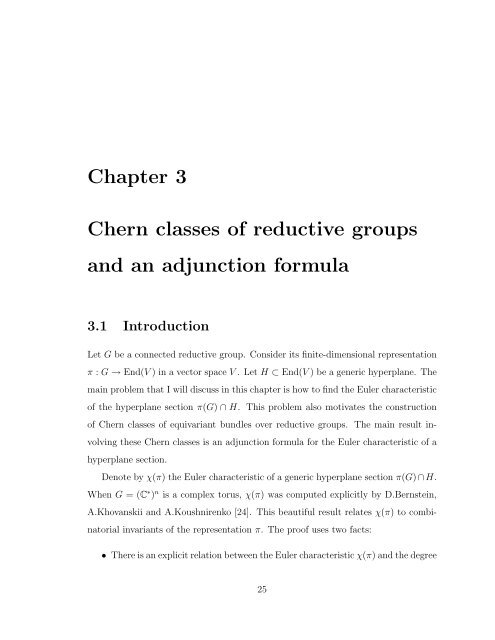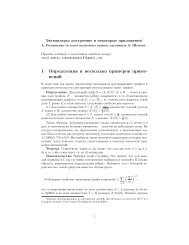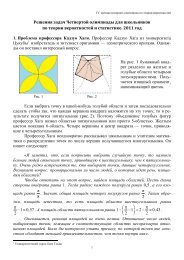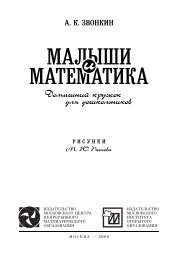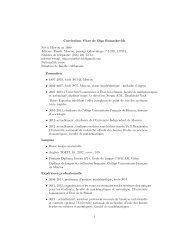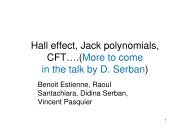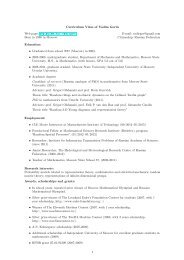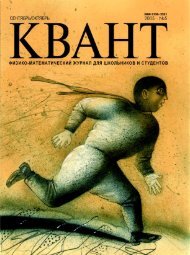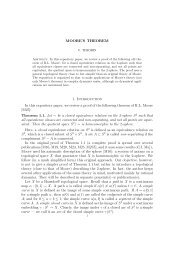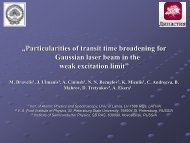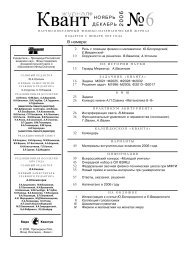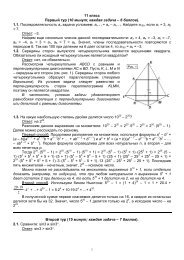a gauss-bonnet theorem, chern classes and an adjunction formula
a gauss-bonnet theorem, chern classes and an adjunction formula
a gauss-bonnet theorem, chern classes and an adjunction formula
You also want an ePaper? Increase the reach of your titles
YUMPU automatically turns print PDFs into web optimized ePapers that Google loves.
Chapter 3<br />
Chern <strong>classes</strong> of reductive groups<br />
<strong><strong>an</strong>d</strong> <strong>an</strong> <strong>adjunction</strong> <strong>formula</strong><br />
3.1 Introduction<br />
Let G be a connected reductive group. Consider its finite-dimensional representation<br />
π : G → End(V ) in a vector space V . Let H ⊂ End(V ) be a generic hyperpl<strong>an</strong>e. The<br />
main problem that I will discuss in this chapter is how to find the Euler characteristic<br />
of the hyperpl<strong>an</strong>e section π(G) ∩ H. This problem also motivates the construction<br />
of Chern <strong>classes</strong> of equivari<strong>an</strong>t bundles over reductive groups. The main result involving<br />
these Chern <strong>classes</strong> is <strong>an</strong> <strong>adjunction</strong> <strong>formula</strong> for the Euler characteristic of a<br />
hyperpl<strong>an</strong>e section.<br />
Denote by χ(π) the Euler characteristic of a generic hyperpl<strong>an</strong>e section π(G) ∩ H.<br />
When G = (C ∗ ) n is a complex torus, χ(π) was computed explicitly by D.Bernstein,<br />
A.Khov<strong>an</strong>skii <strong><strong>an</strong>d</strong> A.Koushnirenko [24]. This beautiful result relates χ(π) to combinatorial<br />
invari<strong>an</strong>ts of the representation π. The proof uses two facts:<br />
• There is <strong>an</strong> explicit relation between the Euler characteristic χ(π) <strong><strong>an</strong>d</strong> the degree<br />
25


